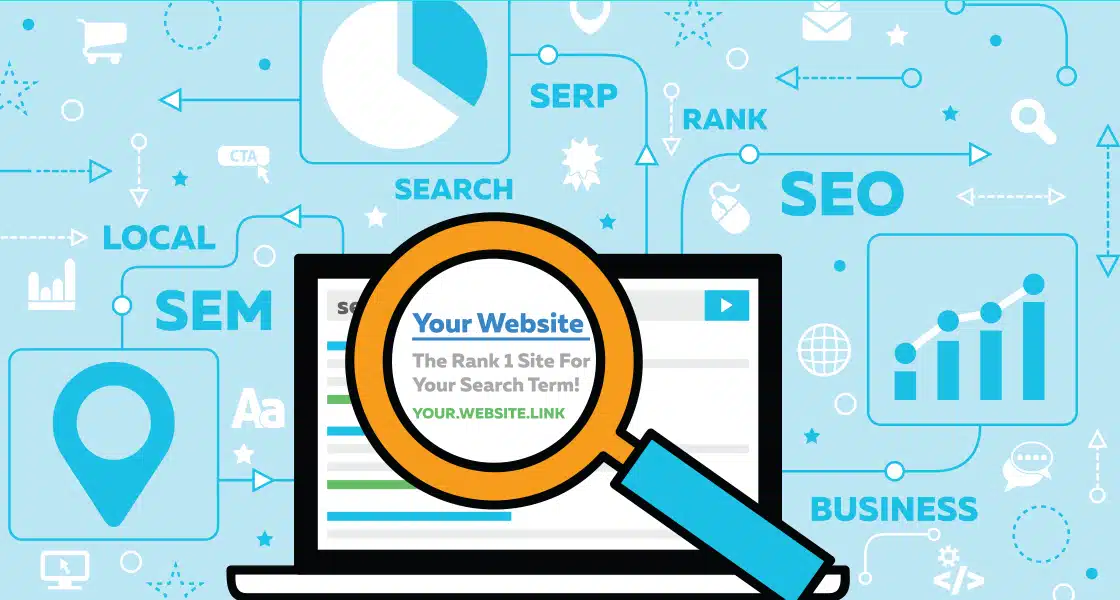health
What Are The Most Common Dog Surgery Procedures?

Dogs are man’s best friend, and we adore them. As a result, it becomes the owners’ worst nightmare when they become ill or injured. No matter how much we adore our canine companions, they are prone to injury and illness. In the worst-case scenario, the dog may require one or two veterinary surgeries.
Surgery is never an easy decision to make, but it is one that must be made. Many common dog health issues may necessitate surgical intervention. Dog surgeries can be either elective or emergency. You can learn more about these in-depth in this blog.
This blog will examine the most common dog surgical procedures and how they benefit our canine companions.
Common Dog Surgeries
It is critical to understand that if your dog’s veterinarian recommends surgery, they act in your pet’s best interests. Veterinary surgical procedures can be either elective or emergency.
Elective surgeries are not medically necessary but ensure your dog’s health and longevity. They are planned to improve your dog’s health when there is no medical emergency. Urgent or emergency procedures are medically necessary for your dog’s health and are frequently lifesaving. You will not have time to prepare for urgent surgery compared to elective surgery.

Find out more about these animal surgeries below.
Elective Surgeries for Dogs
Elective procedures promote a healthy lifestyle and help to prevent infections and diseases. The following are some of the most common elective surgeries for dogs:
Spay or neuter
The most common soft tissue surgeries are spaying and neutering. Spaying or neutering your pet dog has many health and behavioral benefits. Furthermore, it can aid in the prevention of many chronic health issues and reproductive system diseases.
The goal of spaying and neutering is to keep dogs from reproducing. Dogs are typically restricted to limited activity (leash walking only and rest) for 12 to 14 days, after which the incision is usually healed sufficiently for your dog to resume regular activity.
Dental extractions
Some pets require oral surgical procedures to remove plaque and calculus from tooth roots or to extract unsalvageable teeth. Oral procedures can sometimes be avoided by practicing good dental and oral hygiene.
This procedure involves surgically removing teeth that are loose, broken, fractured, or excessively worn. Following the procedure, dogs are usually restrained for a few days and fed softened food. Mouth incisions usually heal in 10 to 12 days.
Skin growths
Skin growths that are not cancerous (benign, such as warts or moles). A small section of skin is removed or no skin tissue is removed during these minor procedures. The area can be treated with topical ointments if no skin is removed.
Often, no rest is required after recovering from anesthesia. A few sutures are placed when a small piece of skin tissue is removed. Dogs may not need activity restrictions depending on where they live. Healing time with either process is typically 10 to 14 days.
Emergency Surgeries for Dogs
Injuries, wounds, internal disorders, fractures, and severe cases necessitate emergency surgery. The vet stabilizes your pets and prepares them for surgery. Your veterinarian will perform surgery once your pet is stable, its pain is controlled, and blood tests show it is safe. Some of the most common emergency procedures for dogs are as follows:
Orthopedic surgeries
Orthopedic surgery treats common musculoskeletal disorders such as joint diseases, cruciate disease management (TTA, TPLO), and bone and joint fractures. Animal orthopedic surgery procedures are diverse. Your regular veterinarian or a specialist may perform these procedures. Different types of surgical equipment are required depending on the fracture’s severity, type, and location.
Some fractures can be treated with specialized plates and screws, while others require more extensive treatment. All orthopedic procedures require strict confinement for 6 to 8 weeks, followed by another 2 to 4 weeks of gradual reintroduction of activity. Antibiotics and pain relievers are prescribed due to the risk of infection and pain. Following all instructions and receiving follow-up care is critical to avoiding complications and delayed recovery.
Skin lacerations
Skin surgery may be required for skin lacerations, abscesses, or wounds. In such cases, the area will be thoroughly cleaned, and any damaged tissue will be removed. If possible, the area is surgically closed, with or without a drain (the drain prevents fluid build-up under the skin).
Following their discharge, your dog must be restricted from running, jumping, or playing. To keep the incision clean, at-home care is required. If a drain is present, it is often necessary to flush it with saline daily until it is removed 5 to 7 days after the initial surgery. Sutures, if used, are usually removed 14 days after surgery. If the wound cannot be surgically closed, it will necessitate frequent bandage changes until the site heals.
Stone removal surgeries
The urethra and bladder are cleaned of stones and crystals during this procedure. A urinary catheter is inserted to prevent stones from entering the urethra. A small incision in the lower abdomen is made. After the bladder has been secured, an incision is made, and the stones or crystals are removed. Depending on the size of the stones and crystals, the bladder and urethra may be flushed several times to remove them.
Following surgery, dogs are typically hospitalized for a few days to ensure that they urinate, eat, and drink normally. They must be kept strictly confined with no exercise once released. They must also be walked on a leash to monitor urine color and how much and frequently they urinate. External skin sutures will be removed 14 days after the procedure.
Wrapping Up
You should now be familiar with the most common surgical procedures for dogs. Pet owners should be knowledgeable enough to consult their veterinarians about their options. Even though surgery has advanced significantly, minor procedures still necessitate careful planning. To learn more about the surgery, go through the Vet and Tech surgical procedures.
Vet and Tech is a veterinary resource that offers a variety of veterinary services. In addition, most procedures include information about various aspects of surgery, such as symptoms, prevention, treatment, and cost. You can better understand the surgeries by reading this detailed information about them before your pet’s procedure.
health
3 Health and Safety Essentials for Restaurant Supplies Post-Covid
The COVID-19 epidemic has a profound impact on the restaurant sector, changing its environment and highlighting the critical role that health and safety protocols play in all facets of operations.

The COVID-19 epidemic has a profound impact on the restaurant sector, changing its environment and highlighting the critical role that health and safety protocols play in all facets of operations. Of all the things that need to be taken care of, managing restaurant supplies is one of the most important aspects where careful attention to detail is essential. To protect the health and safety of their employees and customers in the post-pandemic era, restaurant managers and owners need to focus on three key areas.
Stringent Hygiene Protocols
Maintaining strict sanitary measures is essential in the post-COVID restaurant landscape. The greatest possible standards of cleanliness must be adhered to in every facet of the management of restaurant supplies, beginning with the inventory and continuing through storage and utilization. Sanitizing surfaces, equipment, and storage facilities on a consistent basis is necessary in order to stop the spread of infectious diseases as much as possible. Putting in place regular cleaning plans and checklists can be an effective way to guarantee that all spaces are adequately cleaned and disinfected. It is also vital to provide continual training to staff members on the right methods of sanitation and the appropriate application of cleaning chemicals in order to maintain a clean and sanitary environment. This training should be provided regularly. When maintaining these standards of hygiene, it is necessary to invest in high-quality cleaning agents and disinfectants created expressly for businesses involving food service.
Adoption of Contactless Technologies
The use of contactless technology emerges as a vital strategy that can help limit the possibility of infectious organisms making their way into the institution. This is because it eliminates the need for direct physical contact with restaurant supplies, which is a common cause of infection. Using digital platforms for the management of inventory, the ordering process and the payment process not only improves operational efficiency but also decreases the number of points of contact with individuals. This is because digital platforms allow for a more streamlined procedure. In order to provide a transaction experience that is both streamlined and contact-free, mobile applications that enable the processing of payments and the placing of orders are available. Professional efforts are further bolstered by the employment of contactless delivery and pickup solutions, which allow you to provide customers with an eating experience that is not only safe but also convenient. The adoption of innovative solutions such as touchless faucets and dispensers is a significant contributor to the alleviation of the risk of cross-contamination in the regions of the kitchen and the restrooms.
Prioritizing Reliable Supply Chains
It is of utmost importance to prioritize dependable suppliers for restaurant supplies in light of the disruptions that the epidemic has caused to supply chains around the world. It is possible to guarantee the honesty and security of the products that are purchased by forming partnerships with reliable suppliers who adhere to severe quality control standards. When it comes to the safety and authenticity of the products that are received, selecting certified vendors who comply with industry norms and standards provides assurance. In addition, keeping communication lines with suppliers open and transparent makes it easier to receive timely updates on product availability and any potential problems, which in turn makes it possible to take preventative measures to fix supply chain problems. This can help lessen the impact of disruptions in the supply chain and ensure a continuous and dependable flow of key products. Developing contingency plans and alternate sourcing techniques can also help.
Conclusion
Managing the intricacies of restaurant operations following the COVID-19 pandemic requires a comprehensive strategy that prioritizes health and safety concerns. By emphasizing dependable supply chains, using contactless technologies, and adhering to strict hygiene regulations, restaurant owners and managers can look forward to a future where the well-being of employees and customers is efficiently protected. These three essentials are fundamental in an era marked by unparalleled challenges, and by adhering to these principles, the industry can adjust to the changing environment while maintaining the enjoyment of the eating experience and, most importantly, ensuring safety and security.
health
How to optimize internal medicine and laboratory billing workflows for enhanced revenue generation?
How to optimize internal medicine and laboratory billing workflows for enhanced revenue generation?
Efficient billing workflows are crucial for internal medicine practices and laboratory services to maximize revenue generation. This article explores strategies to optimize billing processes in both internal medicine and laboratory settings, ensuring accurate reimbursement and financial success.
Understanding the Importance of Billing Optimization:
Delving into the significance of optimizing billing workflows for internal medicine billing services practices and laboratory services, including the impact on revenue generation, cash flow, and overall financial health.
Internal Medicine Billing Services:
Exploring specific strategies to optimize billing workflows for internal medicine practices, such as:
- Comprehensive Documentation: Emphasizing the importance of thorough and accurate documentation of patient encounters, procedures, and diagnoses to support billing claims.
- Coding Accuracy: Ensuring proper coding of medical services and procedures using appropriate ICD-10 and CPT codes to maximize reimbursement and minimize claim denials.
- Timely Claims Submission: Implementing processes to submit claims promptly to insurance payers to expedite reimbursement and minimize delays in cash flow.
- Denial Management: Developing protocols for effectively managing claim denials, including timely resubmissions, appeals, and resolution of billing discrepancies.
Laboratory Billing Services:
Detailing optimization strategies for laboratory billing workflows, including:
- Test Order Documentation: Ensuring accurate documentation of test orders, specimen collection, and results interpretation to support billing claims and compliance requirements.
- Coding and Billing Accuracy: Proper coding of laboratory tests and services using relevant CPT and HCPCS codes, with attention to modifiers and billing guidelines to maximize reimbursement.
- Insurance Verification: Verifying patients’ insurance coverage and benefits prior to performing laboratory tests to prevent billing errors and ensure accurate claims submission.
- Electronic Claims Submission: Leveraging electronic billing systems to submit claims efficiently, track claim status, and streamline reimbursement processes for laboratory services.
Utilizing Technology Solutions:
Exploring the role of technology solutions in optimizing internal medicine and laboratory billing workflows, including:
- Electronic Health Records (EHR): Implementing EHR systems with integrated billing functionalities to streamline documentation, coding, and claims submission processes.
- Practice Management Software: Utilizing practice management software to automate billing tasks, track billing metrics, and identify opportunities for optimization and revenue enhancement.
- Revenue Cycle Management (RCM) Tools: Investing in RCM tools to monitor revenue performance, identify trends, and address bottlenecks in billing workflows for internal medicine and laboratory services.
Training and Education for Staff:
Prioritizing staff training and education on billing regulations, coding updates, and best practices for internal medicine and laboratory billing. Providing ongoing training ensures that staff members are equipped with the knowledge and skills necessary to optimize billing workflows and maximize revenue generation.
Compliance and Regulatory Adherence:
Emphasizing compliance with healthcare regulations, coding guidelines, and billing standards to mitigate risks of audits, penalties, and legal issues. Ensuring adherence to regulatory requirements promotes billing accuracy, integrity, and ethical practices in internal medicine and laboratory billing.
Continuous Performance Monitoring and Improvement:
Establishing processes for ongoing performance monitoring and quality improvement in internal medicine and laboratory billing workflows. Regular audits, reviews, and feedback mechanisms enable identification of areas for optimization and implementation of corrective actions to enhance revenue generation.
Streamlining Prior Authorization Processes:
Implementing efficient processes for obtaining prior authorizations for procedures, tests, and services, particularly in internal medicine practices where referrals and diagnostic tests may require approval from insurance payers. Streamlining prior authorization workflows minimizes delays in patient care and ensures timely reimbursement for services rendered.
Enhancing Patient Education on Billing Practices:
Educating patients about billing processes, insurance coverage, and financial responsibilities associated with internal medicine visits and laboratory tests. Clear communication about co-pays, deductibles, and out-of-pocket expenses empowers patients to understand their financial obligations and facilitates prompt payment, reducing accounts receivable and improving revenue collection.
Implementing Performance Incentives for Billing Staff:
Introducing performance incentives for billing staff based on key performance indicators (KPIs) such as claim submission rates, denial rates, and accounts receivable turnover. Incentivizing staff members for achieving billing targets motivates productivity, accuracy, and efficiency in internal medicine and laboratory billing services workflows.
Collaboration with Payers for Contract Negotiation:
Engaging in collaborative discussions with insurance payers to negotiate favorable reimbursement rates and contract terms for internal medicine services and laboratory tests. Strategic contract negotiations optimize revenue potential and strengthen financial partnerships with payers, benefiting both healthcare providers and patients.
Implementing Telemedicine Billing Practices:
Adapting billing practices to accommodate telemedicine services, particularly in internal medicine practices, where virtual consultations have become more prevalent. Understanding the unique billing requirements for telemedicine encounters, including coding, documentation, and reimbursement guidelines, ensures accurate billing and compliance with regulatory standards.
Centralizing Billing Functions for Efficiency:
Centralizing billing functions for internal medicine and laboratory services within a single department or outsourcing to a specialized billing company. Centralization improves coordination, standardization, and efficiency in billing processes, facilitating seamless revenue cycle management and optimizing revenue generation.
Conducting Regular Financial Reviews and Analysis:
Conducting regular financial reviews and analysis of internal medicine and laboratory billing performance metrics, such as revenue trends, reimbursement rates, and accounts receivable aging. Data-driven insights inform strategic decision-making, identify areas for improvement, and guide initiatives to enhance revenue generation and profitability.
Fostering a Culture of Continuous Improvement:
Promoting a culture of continuous improvement and innovation in internal medicine and laboratory billing workflows, encouraging staff members to contribute ideas for process optimization and efficiency enhancements. Embracing a culture of learning and adaptability enables organizations to stay ahead of industry trends and maintain competitiveness in revenue generation.
Conclusion:
In conclusion, optimizing billing workflows is essential for internal medicine practices and laboratory services to maximize revenue generation and financial success. By implementing strategies such as comprehensive documentation, accurate coding, leveraging technology solutions, staff training, compliance adherence, and continuous performance monitoring, internal medicine practices and laboratories can streamline billing processes, minimize revenue leakage, and achieve optimal reimbursement for services rendered.
health
A Step-by-Step Guide to Evaluating and Selecting a Telehealth Solution
A Step-by-Step Guide to Evaluating and Selecting a Telehealth Solution

In the rapidly evolving healthcare domain, telehealth has emerged as an invaluable methodology for expanding access to care, enhancing the delivery of health services, and achieving better patient outcomes. As telehealth grows in importance and complexity, healthcare providers face the challenge of selecting the right technology to adapt to changing healthcare dynamics while ensuring the best patient care.
Key Takeaways:
- Methodical evaluation of telehealth solutions ensures that healthcare providers select a system that aligns with their specific needs and objectives.
- Detailed assessment criteria, including technical capabilities, compliance, user experience, and scalability, are crucial for making an informed decision.
- Continuous collaboration and feedback from stakeholders, including clinicians and patients, are pivotal in successfully adopting a telehealth platform.
Understanding Your Telehealth Needs
The first step in choosing the best telehealth solution is clearly defining what you require from such a platform. This involves looking at your patient population, services offered, and operational workflows. Assessing your needs should be comprehensive, considering the challenges and opportunities telehealth will address within your organization.
Moreover, evaluating existing infrastructure and technical capabilities is essential to determine compatibility and integration requirements for seamless telehealth implementation. Engaging stakeholders, including clinicians, administrators, and patients, in the needs assessment process ensures that the telehealth solution aligns with user expectations and workflow preferences. Organizations can effectively identify the most suitable solution to optimize patient care delivery and operational efficiency by prioritizing clarity and thoroughness in defining telehealth needs.
Assessing Technical Requirements and Integration Capabilities
Your current electronic health records (EHR) and health information systems should work seamlessly with a telehealth solution. Confirming that the selected platform satisfies the technical requirements necessary for your healthcare setting, including interoperability with the hardware and applications that your patients and providers use, is imperative.
Furthermore, conducting thorough compatibility tests and pilot implementations can help identify any potential integration challenges or technical limitations early in the process. Collaborating with IT professionals and vendors to ensure that data security protocols and regulatory compliance standards are met is essential for safeguarding patient information and maintaining regulatory compliance. By prioritizing seamless integration and technical compatibility, healthcare organizations can maximize the effectiveness and efficiency of their telehealth initiatives while minimizing disruptions to existing workflows.
Ensuring Security and Compliance with Healthcare Standards
Compliance with standards and regulations is non-negotiable in healthcare. A telehealth solution must adhere to HIPAA guidelines and provide end-to-end encryption to safeguard patient data. The platform must also have measures in place for data storage, consent, and access controls to comply with the latest healthcare laws and regulations.
Considering the User Experience for Patients and Providers
An effective telehealth solution offers a seamless, intuitive user experience for both patients and healthcare providers. This includes minimal technical complexity, straightforward scheduling, and easy access to support services. A system fostering user satisfaction and engagement will be integral to its success.
Moreover, considering patients’ and providers’ diverse needs and preferences ensures that the telehealth platform caters to a wide range of users, enhancing accessibility and usability. Incorporating user feedback and conducting usability testing throughout the development and implementation phases enables continuous improvement and refinement of the user experience. By prioritizing simplicity and convenience in design and functionality, telehealth solutions can foster trust, satisfaction, and adoption among patients and providers, ultimately leading to better health outcomes and operational efficiencies.
Exploring Vendor Support and Service Reliability
Vendor support is crucial for maintaining the functionality and reliability of your telehealth system. Selecting a vendor who offers comprehensive training, timely customer service, and technical support is essential. Consider service reliability, including uptime guarantees and the system’s performance under peak loads.
Furthermore, evaluating the vendor’s track record in delivering updates, addressing security vulnerabilities, and adapting to evolving regulatory requirements is vital for long-term system sustainability. Discussing with current clients or reviewing customer testimonials can provide insights into the vendor’s responsiveness and commitment to ongoing support. By prioritizing vendor support and service reliability, healthcare organizations can mitigate risks and ensure the uninterrupted delivery of telehealth services to patients and providers.
Evaluating Costs and Potential Return on Investment
Cost considerations are often among the most influential factors when selecting a telehealth solution. Look beyond the initial purchase price to evaluate the total cost of ownership, which includes maintenance, upgrades, and support. Assessing the potential return on investment (ROI) by considering long-term benefits such as improved patient retention and time savings can help justify the expense.
Gathering Feedback and Conducting Pilot Testing
Gathering feedback from staff and users who will interact with the telehealth platform is advantageous before making a final decision. Conducting a pilot test with a select group of users provides valuable insights into the system’s strengths and weaknesses and allows you to address any concerns promptly.
Deciding and Implementing Your Chosen Telehealth Solution
After assessing each aspect of prospective telehealth solutions, decide based on the platform that best meets your criteria. The implementation process should be carefully planned, with provisions for staff training and monitoring key performance indicators (KPIs) to evaluate the system’s effectiveness post-launch.
Preparing for Scalability and Future Growth
Telehealth technology is continually advancing, and your chosen solution should accommodate future growth. This may include scaling to a more extensive user base, integrating additional technologies, and adapting to new healthcare delivery models. A scalable system ensures that you can expand telehealth offerings without significant reinvestment.
Conclusion
As healthcare providers continue to adopt telehealth strategies, the importance of selecting a suitable platform becomes clear. With a structured approach to evaluation and selection, organizations can meet current needs and anticipate future advancements and challenges in telehealth. In doing so, they can deliver a high level of care that meets provider efficiency and patient satisfaction goals, effectively meeting the demands of an ever-evolving healthcare landscape.
The journey to choosing a telehealth solution is intricate and requires meticulous attention to many factors. By following the steps outlined in this guide, healthcare providers can confidently navigate the selection process, ensuring they invest in the best telehealth solution for their current needs and a prolific future in digital health services.
-

 fashion9 months ago
fashion9 months agoEssential Clothing Brand- Raising Your Closet Basics
-

 fashion9 months ago
fashion9 months agoTips for Choosing the Right Fabric for Your Beautiful Midi Dress
-
Tech9 months ago
A Complete Checklist on Selfie Verification – How it Works in Digital Landscape
-

 business9 months ago
business9 months agoEmpowering Businesses Through Efficient HR and Payroll Outsourcing Solutions
-

 technology9 months ago
technology9 months agoThe Evolution of Cybersecurity: Comprehending the Role of Hardware Firewalls in Protecting Digital Landscapes
-

 travel9 months ago
travel9 months agoTravel Deeper, Spend Smarter: Unlocking Hidden Gems on a Budget
-

 search engine optimization9 months ago
search engine optimization9 months ago2024 Best Top 10 Key SEO Tips to Boost Your Website’s Visibility
-

 technology8 months ago
technology8 months agowslregisterdistribution Failed with Error: 0x80370114
